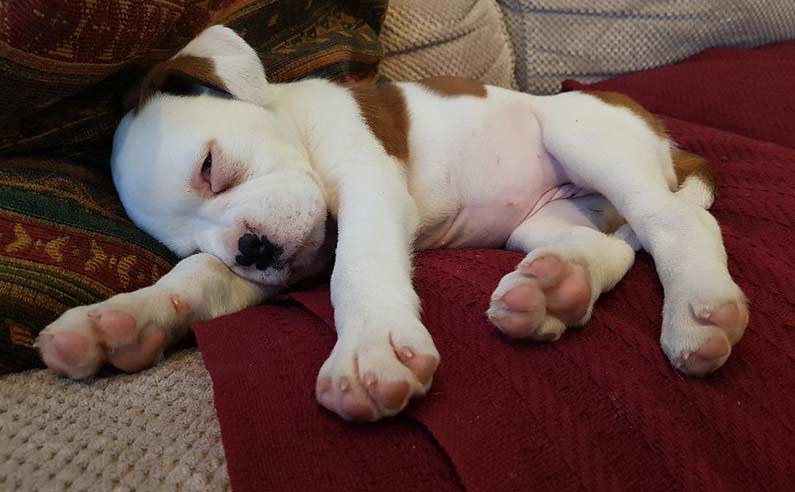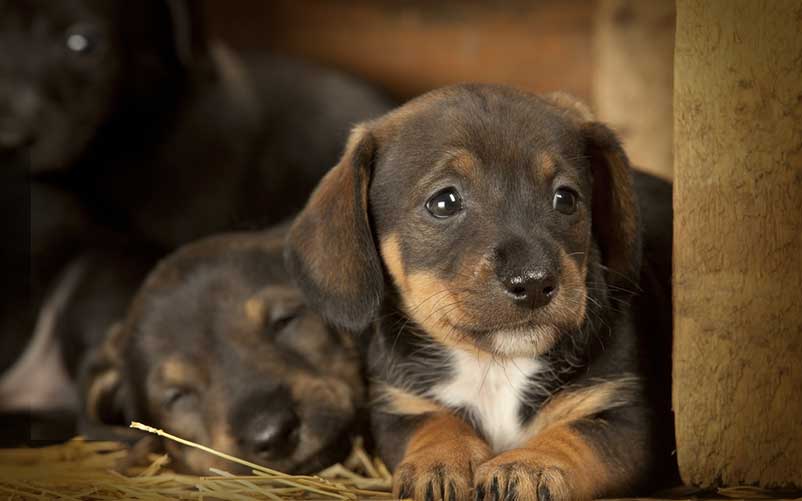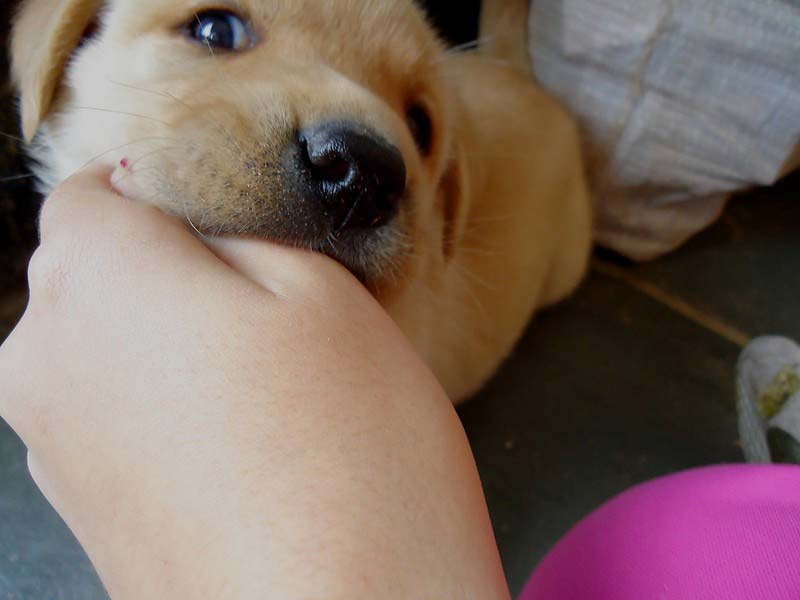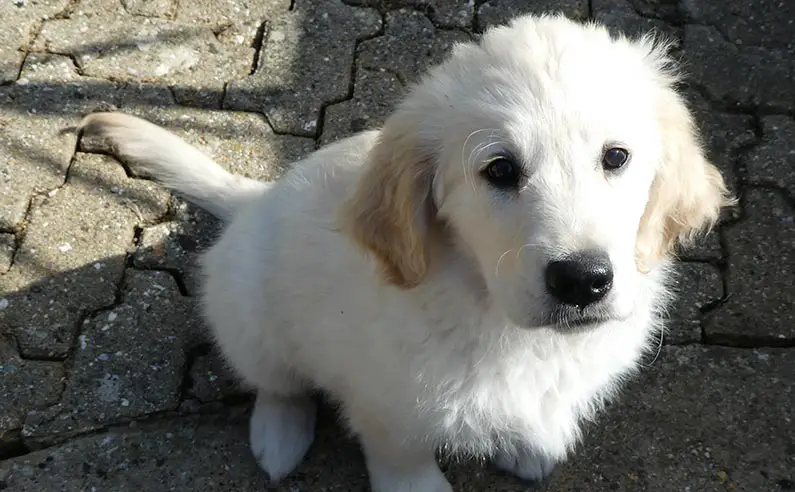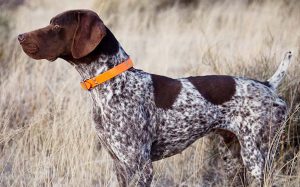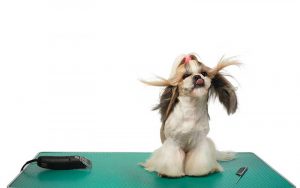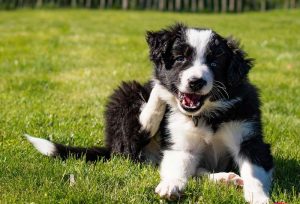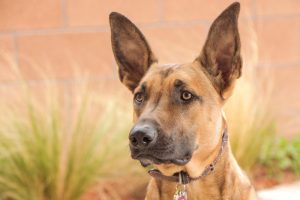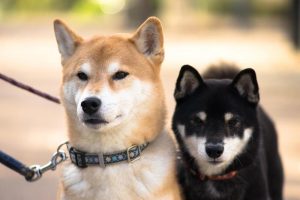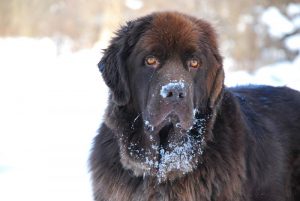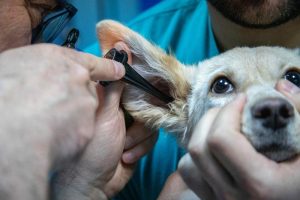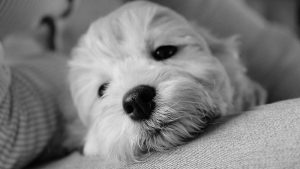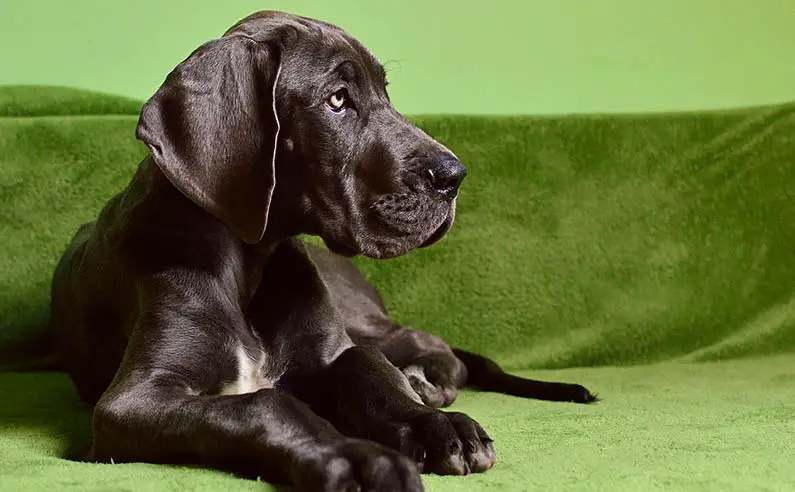
The Great Dane is a friendly and dependable dog breed that currently ranks 16th in the AKC. Being the gentle giants that they are, they should come from a healthy puppyhood to make them strong defenders, either in a household or as working dogs.
With a proper diet, your Great Dane will grow up to be a strong companion. So, how much should you feed your Great Dane puppy, and how often? We’ll find out the answers in this article. We hope that this article will help you raise your Great Dane pup by giving them quality food and proper scheduling.
Page Contents
How much to feed a Great Dane puppy?
Generally, the Great Dane puppy should be fed 3 to 8 cups a day depending on their age and gender. By their adulthood, the Great Dane pup could be taking around 6 to 10 cups a day depending on their activity and other factors. A female Great Dane, on the other hand, will need about 6 to 8 cups a day.
See also:
The reason why Great Danes need a lot of puppy food daily is generally that they are considered a giant breed. They could even stand taller than an average person when they reach adulthood so they’ll need to be fed much more than most dog breeds.
A Great Dane puppy should be fed between 2 to 3 times a day. Again, this amount depends on the age of your puppy, as well as their daily activities and other factors.
Keep in mind that during the weaning process, all puppies can be free-fed so that they’ll get used to solid food. Adjusting to new food is difficult for puppies at a young age because they have always been used to a liquid diet via nursing. Therefore, adding water is important to help puppies digest the food.
Start by only adding a small amount of the solid food so it looks like a mushy mixture. It takes a lot of patience to wean any puppy so you should keep offering the food mixture a few times a day. Or, you can also leave it in the living quarters of the puppy but make sure to take it out after 20 minutes to avoid bacteria build-up, which can harm your puppy’s health.
By the time your puppy has been fully weaned, here are some guidelines on how much you should feed your puppy depending on their age and gender:
3 to 6 months old
Male puppies should be fed with around 4 to 8 cups of food a day. Meanwhile, female puppies are best with 3 to 6 cups a day. You can increase the amount of food if they are usually very active and have more outdoor playtime.
Aside from that, you can also visibly inspect your puppy for signs of lack of weight or excess of it. If you see ribs then that’s a sign that your pup needs more cups of food in their daily schedule. Always make sure to divide the cups of food equally 3 times a day.
8 to 12 months old
Slowly increase the amount of food to 6 to 10 cups a day for a male Great Dane puppy. On the other hand, a female pup should get about 5 to 8 cups a day. Again, make sure to equally divide the cups into separate meals.
Due to their increasing growth spurt, your puppy might be prone to feeding a lot but make sure they still get the right amount per meal. If your puppy is a picky eater, you can add in a little bit of dog-safe flavorings, such as broth, as long as it doesn’t have a lot of sodium. You can also mix kibble and wet food to enhance the flavor.
1 to 2 years old
When your puppy nears adulthood, they should be fed 9 to 15 cups a day for males and 8 to 12 cups a day for females. They will also most likely chow down everything they see so you need to discipline them when it comes to eating. Big dogs like Great Danes could even munch more than 15 cups of kibble a day, which is normal.
Keep in mind that changing dog food brands is always a tricky method, especially with the Great Dane. This breed is very prone to digestive upsets so introducing new food is not a walk in the park.
Always remember that new food should be introduced properly to your puppy to avoid stomach problems. You can start by adding around 25% of the new food brand and 75% of the old food in the puppy’s food bowl. Then, gradually increase the amount of the new food to half and a half each. It will take a couple of days and eventually, your puppy will get used to eating just the new food.
Furthermore, here’s a helpful chart to help you figure out how many grams of food a day to feed your Great Dane based on their weight and activity levels:
| Great Dane puppy weight (lbs.) | Normal activity | High-intensity activity |
|---|---|---|
| 110 | 634 grams (7 cups) | 765 grams (8 3/8 cups) |
| 121 | 681 grams (7 1/2 cups) | 822 grams (9 cups) |
| 132 | 727 grams (8 cups) | 877 grams (9 5/8 cups) |
| 143 | 772 grams (8 1/2 cups) | 931 grams (10 1/4 cups) |
| 154 | 816 grams (9 cups) | 985 grams (10 3/4 cups) |
| 165 | 859 grams (9 3/8 cups) | 1037 grams (11 3/8 cups) |
| 176 | 902 grams (9 7/8 cups) | 1088 grams (11 7/8 cups) |
Great Dane Puppies Feeding Schedule
So, do you want to know how often you should feed your Great Dane puppy? Well, here’s a simple chart to let you know how often they should be fed depending on their age:
| Age | Cups of food | Number of meals a day |
|---|---|---|
| 2 to 4 months | 2 to 6 | 3 |
| 5 to 8 months | 5 to 9 | 2 |
| 9 to 12 months | 6 to 9 | 2 |
| 12 to 18 months | 7 to 10 | 2 |
Great Dane Puppies Growth Chart
Great Danes are big dogs, so it should be easy to not overfeed them, right? Even so, you should always check if your puppy is feeding the right amount of food for their age. Here’s a chart of the ideal weight of a Great Dane pup depending on how old they are:
| Age in months | Male Weight | Female Weight |
|---|---|---|
| 1 month | 10 lbs (4.5 kg) | 9 lbs (4 kg) |
| 2 months | 23 lbs (10 kg) | 20-22 lbs (9-10 kg) |
| 3 months | 40-45 lbs (18-20 kg) | 35-40 lbs (16-18 kg) |
| 4 months | 55-65 lbs (25-29 kg) | 50-60 lbs (23-27 kg) |
| 5 months | 70-85 lbs (32-38 kg) | 62-78 lbs (28-35 kg) |
| 6 months | 83-104 lbs (37-47 kg) | 72-90 lbs (32-41 kg) |
| 8 months | 100-130 lbs (45-59 kg) | 84-110 lbs (38-50 kg) |
| 10 months | 110-150 lbs (50-68 kg) | 95-122 lbs (43-54 kg) |
| 12 months | 118-160 lbs (53-72 kg) | 98-130 lbs (44-59 kg) |
| 15 months | 119-170 lbs (54-77 kg) | 100-138 lbs (45-62 kg) |
| 24 months | 124-174 lbs (56-79 kg) | 100-140 lbs (45-64 kg) |
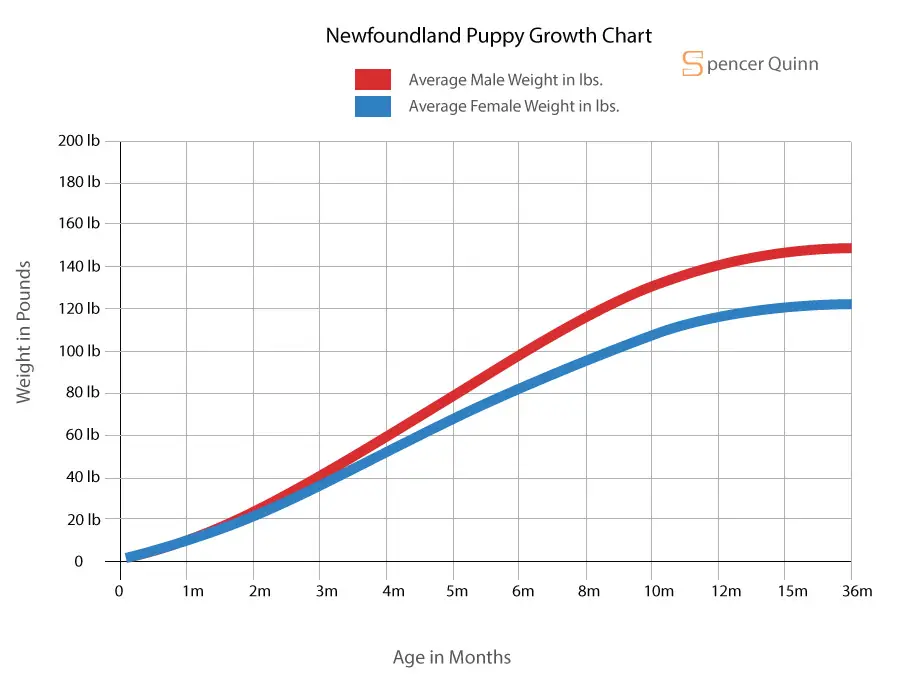
We also have a separate height chart to let you know how much your Great Dane will tower over you and your other dogs around the house (or neighborhood):
| Age | Height (inches) |
| 2 months | 13 to 18 |
| 3 months | 17 to 23 |
| 4 months | 20 to 25 |
| 5 months | 24 to 30 |
| 6 months | 26 to 33 |
| 7 months | 27 to 34 |
| 8 months | 28 to 34 |
| 9 months | 28 to 35 |
| 1 year | 29 to 36 |
| Adulthood | 33 to 36 (male)
30 to 34 (females) |
Recommended Food
A Great Dane puppy needs to have the following considerations for their food:
1. Glucosamine
Great Danes are prone to hip dysplasia because they are a giant breed. Due to their massive bone growth, they’ll need protection by eating foods that are rich in glucosamine. Fortunately, many dog food manufacturers out there are already selling such foods.
2. Protein
A Great Dane puppy needs about 26% protein in its daily diet. Protein is found in most meats, in case you want to feed your pup a raw or homemade diet. For commercial foods, look for words like “chicken is the first ingredient” to ensure that your puppy’s protein source is healthy and reputable (not just random animal meat or by-products).
3. Fair amounts of grains
While most people argue that grains are fillers for your dog, don’t leave them all out because dilated cardiomyopathy is a case that could happen to your Great Dane if they only fed on pea-based diets. It’s not bad to add a few healthy grains – just make sure that they are from reputable sources.
4. Balanced micronutrients
Micronutrients, such as calcium and phosphorus, should be balanced in the diet to avoid too much consumption, leading to health problems. Too much and too little calcium is also bad for your puppy. The recommended amount of calcium and phosphorus is 1 to 1.5% in any puppy food.
Foods to Avoid
Great Dane puppies don’t do well with wet and canned foods because of their high sodium content. This breed is quite sensitive to digestive upsets so it’s best to give them either kibble or homemade/raw diets. Canned wet foods are also usually more expensive as compared to kibble.
With that said, Great Danes are also usually picky eaters so it’s difficult for them to feed on new brands of food. As long as the food that is served isn’t moldy or expired, a Great Dane pup will do just fine.
Of course, as most pet owners know, chocolate, alcohol, some nuts, avocados, and other dangerous foods for dogs shouldn’t be in the hands of your Great Dane, especially during their growth spurt.
FAQs on Feeding a Great Dane Puppy
If you want to know more about feeding your Great Dane pup, here are some frequently asked questions to help you out:
My Great Dane puppy won’t eat. What should I do?
Unless your Great Dane puppy feels nauseated or vomiting, having no appetite for certain foods sometimes is normal for their breed since they are typically picky eaters.
However, during their growth spurt weeks or months, a Great Dane pup might become voracious eaters, such as around their 12th month. Make sure to use a slow feeder bowl to avoid bloat tendencies.
With Great Danes, you have to be patient because just free-feeding them will cause them more ham due to overweight and bloat susceptibility.
How do I know which food is the best for a Great Dane puppy?
Choosing your Great Dane puppy food should be done properly to avoid digestive upsets and other health inconveniences. Here are some pointers that you can use to pick the right puppy food for your Great Dane pup:
1. Choose natural ingredients
Natural ingredients that are sourced from organic farms and sustainable livestock raising are healthy for your growing pup. Look for brands that have responsibly-processed meat, such as cage-free chickens and grass-fed cows and goats.
Instead of by-products and unknown ingredients, having natural sources for your dog’s food will keep your puppy away from digestive issues and health problems.
2. Consider your puppy’s age
A Great Dane puppy will need different nutrients as they grow up. That’s because the more they grow, the more their metabolism changes. By the time they are near adulthood, however, they also need to cut down on the calories to avoid weight issues.
Puppies will grow differently at various stages of life. Fortunately, some dog food brands have specific puppy food for certain growth milestones, so you can choose from those. Just make sure that are of quality ingredients or you can ask your vet for more information or recommendations.
3. Meat source
A good meat source is from a farm that raises their livestock properly. A common ethical practice for fish meat nowadays is wild-caught fish, which is considered sustainable farming/fishing. This ensures that whatever you are feeding your puppy isn’t forcefully cultured and is, therefore, healthy for your puppy.
Aside from that, as mentioned above, quality meat means that the livestock is an indicator of good dog or puppy food. If the meat source is from cage-free and grass-fed livestock, it will yield quality meat-free from guilt and too much stress.
4. Free from fillers and artificial additives
Dogs do not benefit so much from fillers such as corn, soy, and wheat because they aren’t so many nutrients for them. Instead, their fiber sources should be vegetables like peas and carrots.
With that in mind, artificial flavorings and fillers aren’t good for your pup because they will just make them full but they won’t get healthy nutrients from them. Some breeds also have a low tolerance for certain commercial foods that have artificial flavorings and additives, causing digestive upsets and the like.
On the story of Great Danes, if your vet advised that you should still add a bit of grain to their diet to reduce DCM likelihood, then it’s okay to buy brands with grains. Just make sure that they are healthy grains as a protein diet is more ideal for your puppy.
5. Packaging
When it comes to the packaging, if you are feeding a large litter that needs a lot of servings in one go, consider going for a resealable pack. Moreover, good packaging matters in terms of preserving the food, especially if it is wet food.
6. Daily activity
If your pup likes to play around, whether indoors or outdoors, they are bound to burn more calories and fats. Therefore, they will need to be fed more often than pups that are just usually sitting around indoors.
Before you buy the appropriate puppy food, you should consider how much physical activity your pup is getting. That’s because obesity can happen if your puppy isn’t getting enough exercise, especially if their breed is prone to such.
7. Health condition
Some dog breeds have more susceptibility to certain diseases. Talk to your breeder about the health history of your puppy to know if you need certain nutrients in their food. For instance, arthritis and joint problems can be remedied or lessened with glucosamine and chondroitin. Skin problems and coat health can be handled with omega fatty acids, which are commonly found in fish and fish oil.
Great Dane puppies are prone to health problems with their joints so if ever your puppy has a genetic history of hip dysplasia, having glucosamine in their diet is good.
8. No by-products
Animal by-products are commonly seen in grocery store dog food. Did you know that they aren’t exactly healthy for your canine friend? You will never know where they came from so it’s best to avoid them. They could usually come from expired meat from grocery stores and even sick animals, so they are generally unsafe.
Most of the inedible parts of a livestock animal could also be included in such by-products, which could make your puppy sick.
Help! My puppy has diarrhea from food! What should I do?
If you suspect that your Great Dane pup got diarrhea from the food you served, worry not – Great Danes are a breed that’s prone to such tendencies due to tummy sensitivity. You don’t necessarily have to take the Great Dane puppy to the vet all the time – a home remedy will do just fine on some occasions.
In an emergency, ensure that the Great Dane puppy has access to clean water. Immediately stop feeding them whatever they were the last fed and instead, stick to boiled white chicken meat, white rice, and/or even pumpkin puree. Give them this serving for at least 1 to 2 meals or until diarrhea stops.
If your Great Dane pup experiences vomiting, nausea, and extreme weight loss, contact your vet right away.
Raw feeding a Great Dane puppy
Raw feeding your Great Dane puppy can include ground bones, meat, and even whole bones. As long as they are not splintered or smashed, they are safe for your puppy to consume.
If your Great Dane puppy is allergic to most commercial diets then feeding them raw food is a great way to go. Aside from meat and bones, you can also throw in some dog-safe fruits and veggies, as well as liver and other organs. Just make sure that the raw diet has a healthy balance in terms of nutrition.
Slow-feeding a Great Dane puppy
The Great Dane is a breed that’s prone to digestive issues when they feed too much. If you leave your puppy to feed freely then they will have serious health issues, usually regarding their bones due to excessive weight.
On top of that, the Great Dane is a bloat-prone breed. That’s why you should consider any of the following to slow them down when feeding:
1. Raised food bowls
Since the Great Dane is prone to digestive problems, having a higher-designed food bowl will create a better feeding position, resulting in less likelihood of bloat. This also helps them to digest their food (or water) properly.
2. Slow-feeder
By having a Great Dane feed from a slow-feeder bowl, they will have to work harder to get the food that they want. It not only limits them from being bloated but also lessens their likelihood of obesity. They’ll only feed when they are absolutely hungry and it acts like a disciplining mechanism to avoid overweight issues.
3. Toy feeder or puzzle
Why not incorporate both playtime and food in one go? If your Great Dane has some weight issues, you can try using a puzzle feeder so that your puppy needs to make some effort to access the food that they want to have.
4. Wait 1 hour before and after meals before rigorous activity
To avoid gastric problems with your Great Dane pup, always consider putting 1-hour pauses between rigorous playtime and feeding time. This is especially if your Great Dane puppy is always a sporty runner outside of your house.
Conclusion
As a whole, the Great Dane is a loving gentle giant that deserves all the love they can get. However, it all starts with proper nutrition, which you, as their owner, should give properly. By disciplining them with a schedule to avoid bloat and weight issues and choosing the right food, your Great Dane will grow up to be a great family guardian and companion for life.
